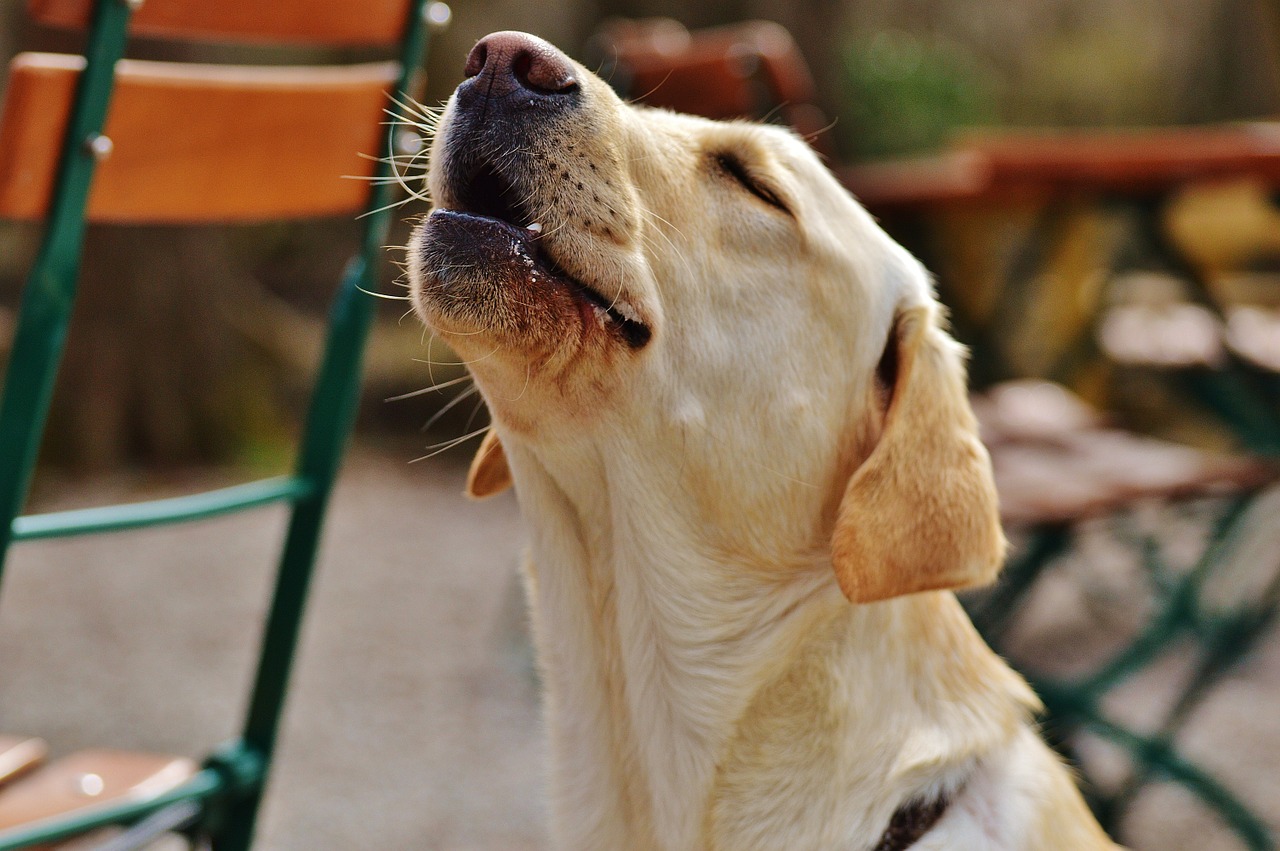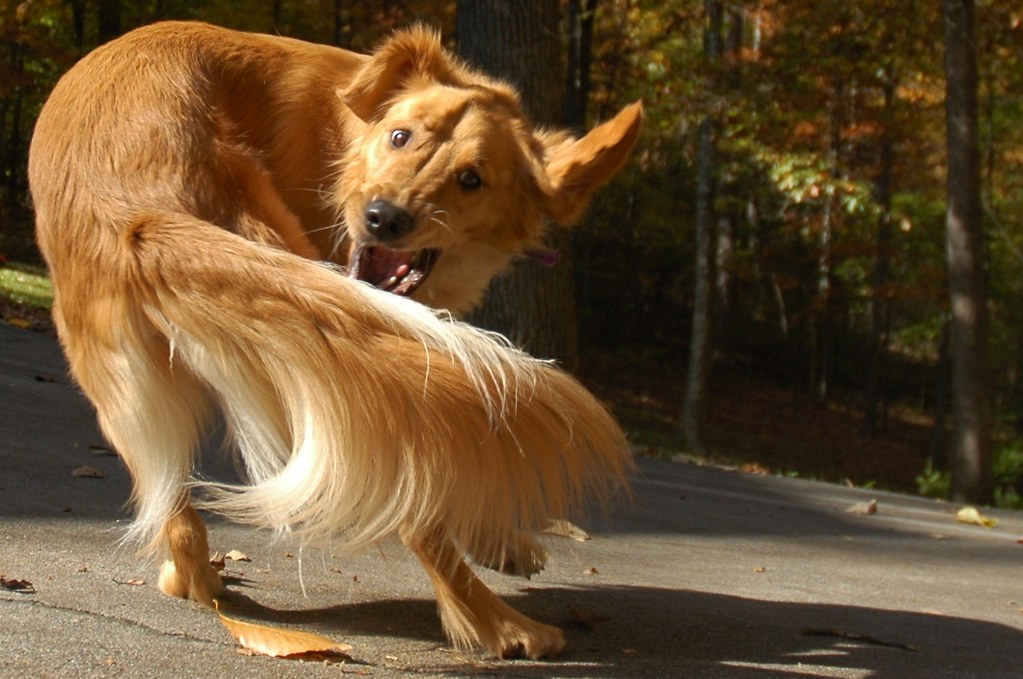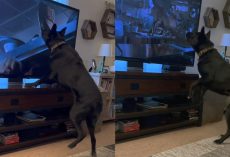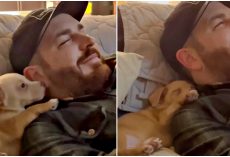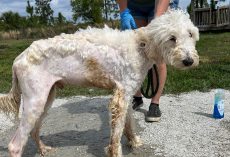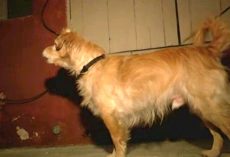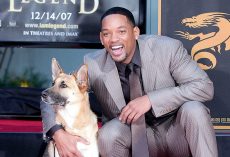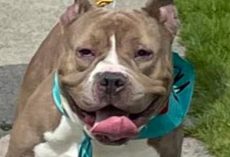Do you ever catch your dog doing something weird that makes you wish they could speak so you would understand them? While dogs can’t express themselves through words, their actions speak volumes about how they are feeling and what they are thinking. In this article, we will find out why man’s best friend howls, chases its tail, and eats its own poop. Plus, the meaning behind this list of common dog behaviors.
1. Howling
The sound of a dog howling is alarming, but excessive howling can be annoying. Veterinary doctor Claudine Sievert, D.V.M. says dogs are wired to sense danger. When a dog howls, it could mean that it has sensed danger or is uncomfortable with the presence of someone. Some dog breeds are more prone to howling than others according to the American Kennel Club. As in the case of Siberian Huskies, they do it to communicate with their owners and to express different emotions.
Keep in mind that there is some overlap between howling and barking. Other reasons for barking include excitement, attention-seeking, boredom, fear, and pain. The key to differentiating the two is to observe their body language and then identify the stimulus that is causing your dog to bark.
2. Looking At You Before Doing Something
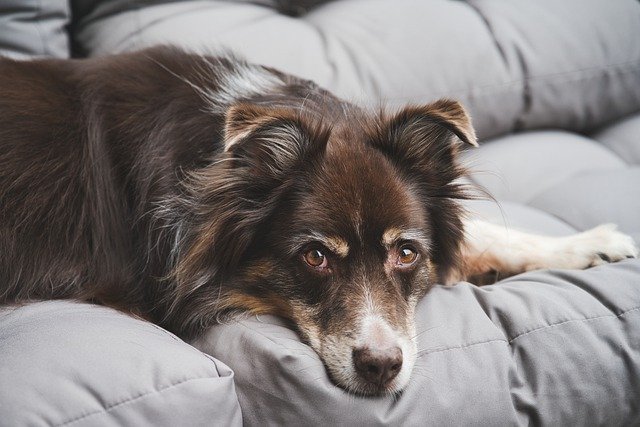
Have you noticed how your dog seems to look at you before deciding on doing something?
Some think it’s an act of defiance, but professional dog trainer Steffi Trott says dogs do not show guilt or defiance the way humans do.
They are social animals and they enjoy eye contact. Dogs may look at you for reassurance or to make sure you are paying attention.
3. Sitting On Your Feet
The experts from The Puppy Academy say dogs sit on your feet because they want your love and attention. But it could also be their way of trying to take your own space. If there are other people or animals in the house, a dog might do this to claim ownership of you.
4. Humping
The obvious reason dogs do this is because they are sexually excited. But what you may not know is that humping is a sign that your dog is trying to take control of a situation. They will hump everything and anything soft and pliant like stuffed animals to blankets.
5. Clinginess
Dogs, like us, crave touch and attention. So if a dog follows you around, it just means it wants to be close to you. But too much clinginess can be disruptive and annoying too. Dr. Sievert says you must train it to survive on its own. Start by giving it some space for a short time, and gradually increase the period over several days. Eventually, your dog will realize that you will always come back and it will learn to enjoy some alone time now and again.
6. Heavy Panting
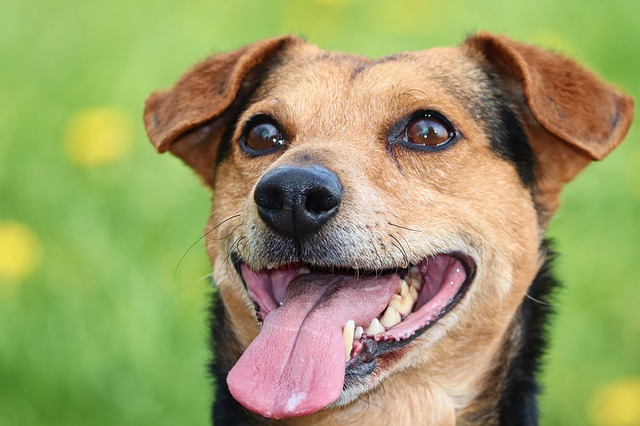
Unlike humans, dogs cannot sweat through their bodies. They cool off by panting. Dr. Sievert says it is normal behavior for active dogs. But extreme panting on a hot day can also be cause for alarm.
Heatstroke in dogs manifests through being restless, laying flat, and not responding to calls because the dogs are so focused on breathing. If your dog exhibits this kind of extreme behavior, take it to a veterinarian right away.
7. Running In Circles
Often referred to as ‘zoomies’ on the Internet, running in circles is a favorite pastime among dogs. But why do they do this? The American Kennel Club says it is a natural dog behavior that is caused by excess pent-up energy that they must release in one big burst. Some dogs ‘zoom’ first thing in the morning, while others do it at night after being stuck at home for a long time.
8. Wagging Tail
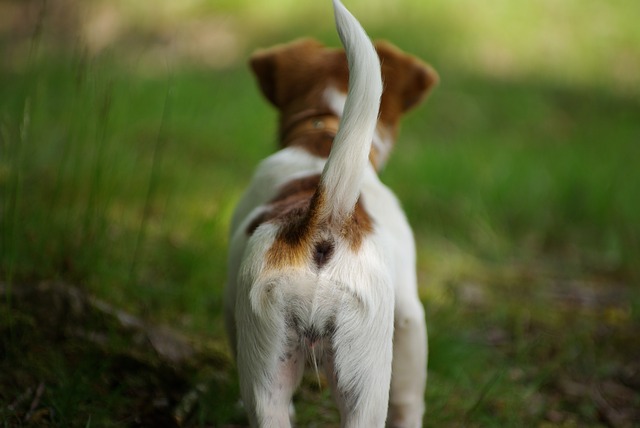
Want to know if your dog is happy? Look at its tail. Dr. Sievert says that a wagging tail is a sign of enthusiasm and happiness. You will probably notice your dog doing this after you have come back from work or school.
If your pup wags its tail often, then you got yourself a happy dog. However, according to dog experts at VCA Hospitals, wagging can also mean other things like agitation, aggression, or curiosity.
Keep an eye out on how their tail wags – fast mean excited, while a slow wagging may indicate wariness or insecurity.
9. Staring Intently
By now, we have already established that dogs like to make eye contact. Steffi Trott says dogs stare, but the meaning depends on the context. They stare if they are highly motivated.
For instance, if you are holding a toy or a treat. In this case, the dog is happy and excited. But staring can also be a sign of escalating aggression.
“If two stranger dogs are staring at each other and appear ‘frozen,’ you absolutely need to separate them at once,” she warns.
10. Submissive Urination
Dogs are natural pack animals, and they have different ways to show their leaders they respect their authority. One of the ways is to lie on their backs and piss on themselves. This act is known as submissive urination. According to The Humane Society of the United States, this is a common act in puppies which they eventually outgrow with age.
Sometimes, pups carry it into adulthood. If it’s not caused by a health issue, you can help your dog build confidence with positive reinforcement training methods and gradually introduce your dog to new people, environment, and routine.
11. Digging
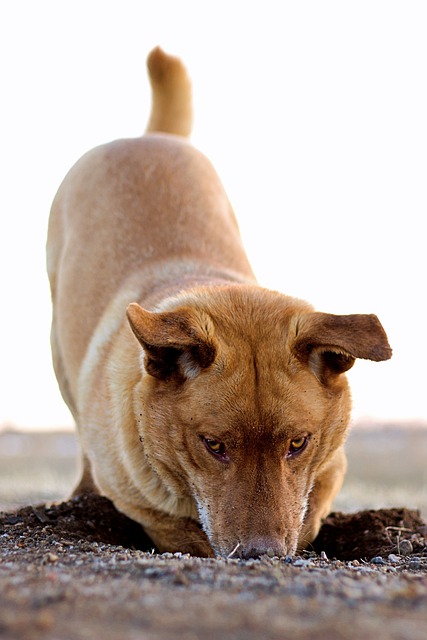
Another common behavior all dogs do is digging. They might do it for fun, or if they are bored. Some dogs dig holes to lie down and cool down. Some do it to try and hunt small animals. Some dogs just do it because of excess energy. The Puppy Academy Team says to let them dig if it’s not too destructive to your property.
12. Butt Sniffing
Pretty sure we’ve all seen our pups do this before. Marissa Sunny from Best Friends Animal Society says that sniffing butts is the dog’s version of a handshake.
They have a keen sense of smell and can learn almost every detail about other dogs such as sex, age, health, and if they have met before with just a quick sniff.
13. Butt Scooting
Here’s another butt-related behavior that dogs do: scooting. It might look funny, but it could mean that your dog has skin irritation, parasites, or trauma on the anal sacs.
It could also mean that it needs to get its anal glands expressed by a local groomer or vet clinic. Overfilled glands can lead to infections and rupturing as per Sunny.
14. Eating Poop (Coprophagia)
According to researchers from Veterinary Medicine and Science, 16% of dogs are “frequent” poop eaters, and that habit is simply embedded in their DNA. It might seem gross to us, but Dr. Benjamin Hart from the University of California – Davis has a specific explanation for this behavior.
He says eating fresh stools is an innate predisposition of ancestral canids living in nature that protects the pack from intestinal parasites present in feces that could occasionally be dropped in the den.’
15. Turning In Circles Before Lying Down
Number 15 on this list of common dog behaviors are turning in circles before lying down. The people from The Puppy Team say it’s a form of nesting that is usually done before going to bed. Like how we fluff our pillows, dogs like to make their spot before settling in.
Experts say they inherited this from their ancestors. It’s been said that wolves sleep with their noses to the wind to pick up the scent of potential threats, circling helps them figure out the direction of the wind.
16. Squinting Or Blinking

Canine expert Steffi Trott says dogs blink or squint when they are stressed or if they want to look non-threatening. Well-socialized dogs will blink at their vet, scared puppies, and their angry owner to communicate that there’s nothing to worry about.
17. Puppy-Dog Eyes
Remember in Part 1 when we discussed that dogs are social animals that seek and enjoy eye contact? Making the ‘puppy-dog eyes’ face is another way for dogs to communicate with their owners. This behavior means they are focused on you and they want some kind of interaction.
For example, the dog will stare longingly at you while you are cutting up a juicy steak with hopes that you would throw him a bone, at the very least. Other dogs may also do this if they want something from you like a toy or an activity like playing or petting.
18. Kicking Up Grass Or Dirt
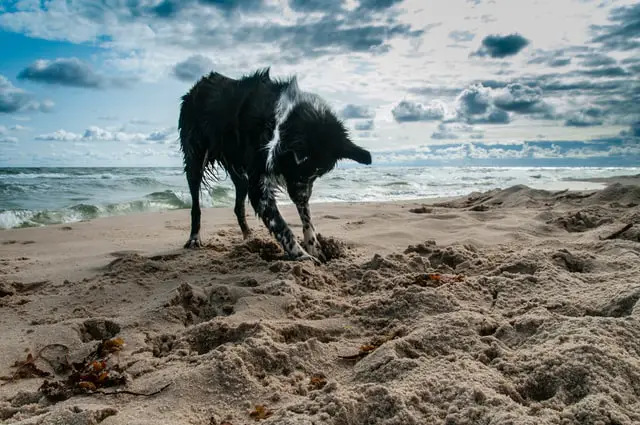
It’s not a secret that dogs like to dig, and with it comes the flying grass or dirt. They do this because their feet have apocrine sweat glands that secrete pheromones.
These are species-specific chemicals that they use to communicate according to canine specialist Nicholas DeRoma. A dog will kick after pooping or pissing to spread and mark its scent on the ground or a specific area.
19. Licking
We’ve all heard that licking means a dog likes you. This is a form of showing affection, kind of like a kiss, but there’s more to it than we think we know says animal trainer and behaviorist, Karen Reese.
She says dogs will lick you if they want to groom you as a mother does to her baby. Other times, they would lick so you would leave it alone. The difference can be determined by observing the dog’s body language while doing the licking. Check if they are relaxed or tense.
20. Chewing
Like a baby sucking its thumb, chewing is an essential activity that puppies do to learn more about their surroundings. Young pups do this to alleviate teething pain, while old dogs do it to keep their jaws and teeth strong.
The American Society for the Prevention of Cruelty to Animals (ASPCA) also noted that dogs chew to combat boredom or anxiety. If your dog is chewing on something that it shouldn’t, like shoes or furniture, he may be lacking physical and mental stimulation.
Avoid this by taking it out on daily walks, letting it play with other dogs, and engaging in mind games and exercises such as food puzzle toys.
21. Baring Teeth

This one is pretty obvious. Dogs bare their teeth in an aggressive pucker if they feel threatened. It is generally a warning sign to back off.
22. Head Tilting
Head tilting is cute when dogs do it, but what does it mean? The experts from VCA explain that this behavior is similar to a nod–it shows that your dog is engaged with what you’re trying to communicate.
But in extreme instances, frequent head tilting that is not associated with communication may mean ear infections or neurological problems. If you notice constant tilting, it would be wise to go and see a vet immediately.
23. Lying In Your Bed When You’re Not There

Have you ever caught your dog laying on your bed? Dogs do this not because of your 5-star quality mattress and sheets, they do it because of their inherent pack mentality.
You and the adults in the house are the leaders of the pack. Dogs respect authority. If you get to sleep where the leaders sleep, then you’re high in the pecking order.
24. Leaning On You
Like clinging, dogs equate leaning to loving. This form of affection makes them feel safe and comfortable. But in certain cases, it could also mean spinal issues. If your dog is leaning against you more often than usual, speak to a vet.
25. Couch Trashing
Dogs require ample and often physical and mental stimulation. Otherwise, the pent-up energy and anxiety will make them act out and even destroy household items.
These include chewing sneakers, digging through trash, or redecorating the couch. To avoid this, you must give your dogs plenty of exercise and distractions through games and mind training.
26. Going Crazy When You Get Home
Nothing compares to the feeling of coming home to be greeted by an excited dog after a long day of work. But they will also do this behavior even if you just stepped out for a few minutes.
Dogs, like humans, are emotional creatures. Their brains release a chemical called oxytocin aka the ‘happy hormone’ whenever they are reunited with their loved ones. In addition to the excitement of seeing you, dogs get excited at the prospect of treats and playtime.
27. Chasing Tail
Remember when we said dogs need lots of exercise and attention? Here’s another behavior that will make you consider increasing the frequency of the much-needed walk and play.
Dogs chase their tails because they are bored. They run after their tail to burn off the excess amounts of energy that have built up in their system due to inactivity.
28. Bringing ‘Gifts’
Did we mention that dogs get bored a lot? Or the fact that they really, really like hanging out with you?
Dogs will often bring their masters ‘gifts’ like toys, shoes, and other random stuff when they want to play or show affection. They do this in the hopes to get some interaction from you. They expect a friendly greeting or maybe a game of fetch.
29. Open Mouth With Relaxed Tail
Steffi Trott says that when a dog opens its mouth and relaxes its tail, it means it is content. High ears show focus, while a relaxed tail means happiness. Dogs also grin. You will learn many things by observing their body language.
30. Cuddling
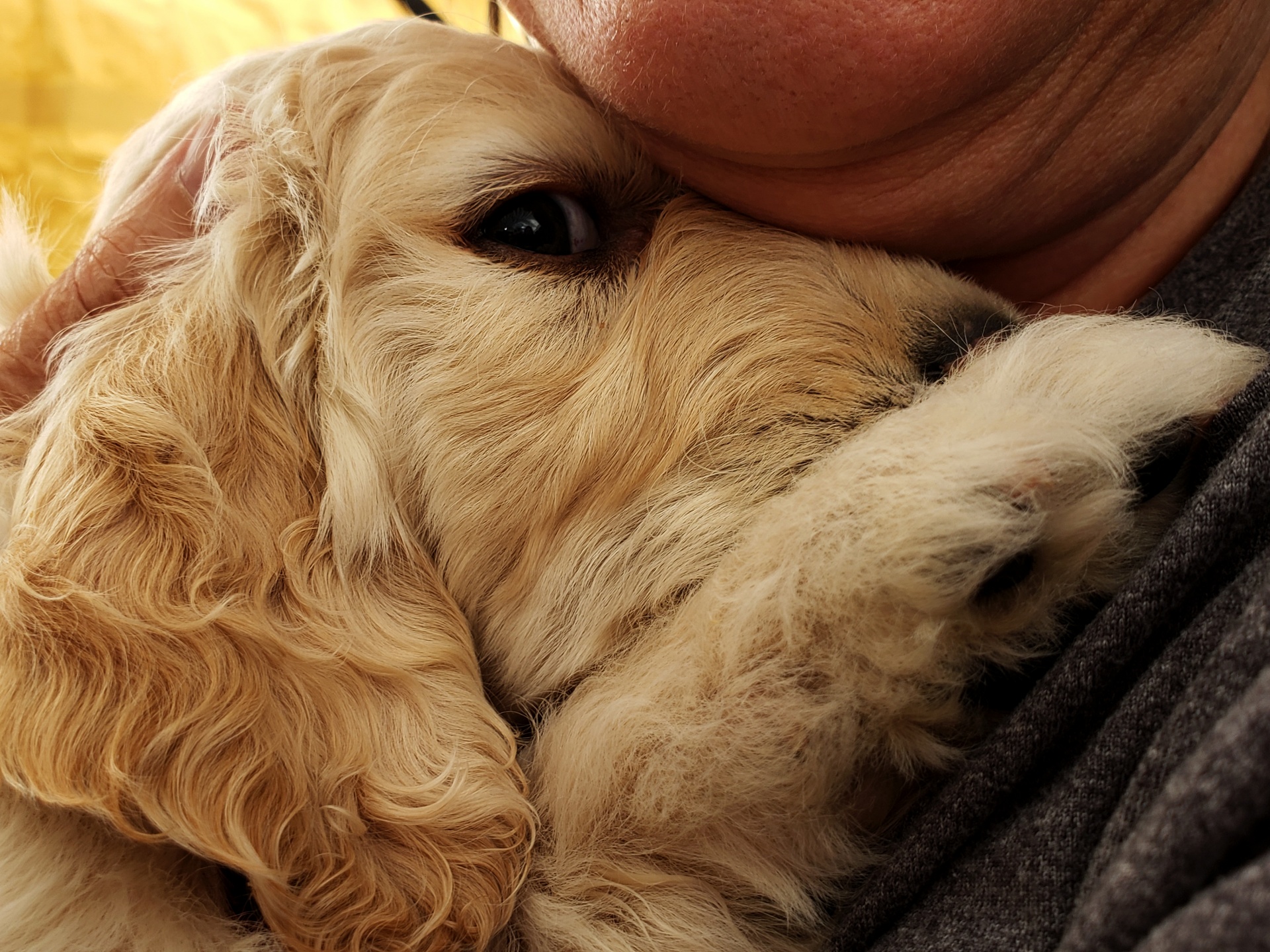
Finally, the last item on the list of dog behaviors is cuddling. By now, we have already pointed out that dogs are emotional and affectionate creatures who love physical attention. This is the reason they tend to cuddle. It releases happy hormones that make them and us feel good.
Do you think you know your dog more by knowing these common dog behaviors and what they mean? Here’s ten more! Hope we helped you understand your furry BFF more!

